
Regionalism - II
Reginald Marsh
1898 - 1954

Reginald Marsh
(1898 - 1954)
Reginald Marsh was an American painter, renowned for his depictions of New York street life throughout the Roaring 20s and the Great Depression. His busy, muddy scenes of seedy nightlife and entertainment were often the focus of his canvases, painted with the gusto and urgency of Social Realism and rendered with egg tempera, oils, watercolors, and ink. He chronicled the bustling beach scenes of Coney Island, as well as the homeless sleeping on Bowery Street, imbuing his subjects with psychological depth. “My pictures have too much shock in them for a lot of people—especially women—to hang on the walls at home,” he is reported to have said. “They don't want to be reminded in their living rooms and bedrooms of the people they see—or don't see—walking on the streets of New York.” Born on March 14, 1898 in Paris, France to American artist parents, Marsh went on to study at Yale University. Before his death in Dorset, VT on July 3, 1954, Marsh had become an important figure in New York's artistic landscape, regularly exhibiting his work in tandem with his teaching position at the Art Students League of New York, where noted Pop artist Roy Lichtenstein was one of his pupils. His colorful murals can be found on important American buildings to this day, including the Alexander Hamilton U.S. Custom House and the William Jefferson Clinton Federal Building.

Reginald Marsh
Sorting the Mail (1936)
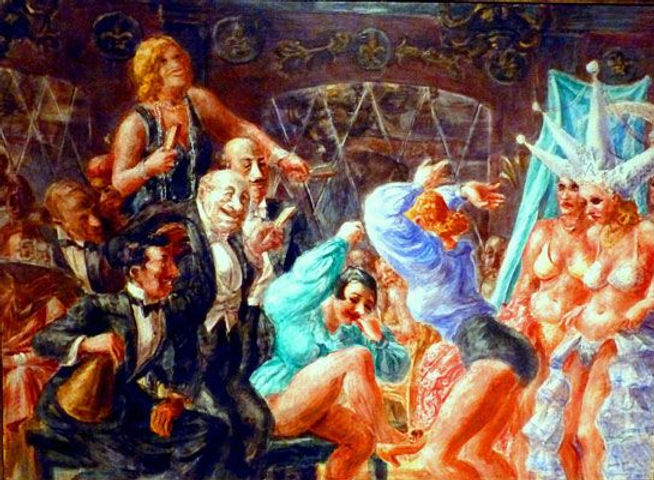
Reginald Marsh
Untitled

Reginald Marsh
Untitled

Reginald Marsh
Untitled

Reginald Marsh
Untitled

Reginald Marsh
Coney Island

Reginald Marsh
Savoy Ballroom

Reginald Marsh
Swing Time

Reginald Marsh
Cabaret, 1938

Reginald Marsh
Hat Display, 1939

Reginald Marsh
Merry-Go-Round, 1930

Reginald Marsh, Wonderland Circus, Sideshow Coney Island, 1930,

Reginald Marsh
Swing Time

Reginald Marsh
Burlesque Show
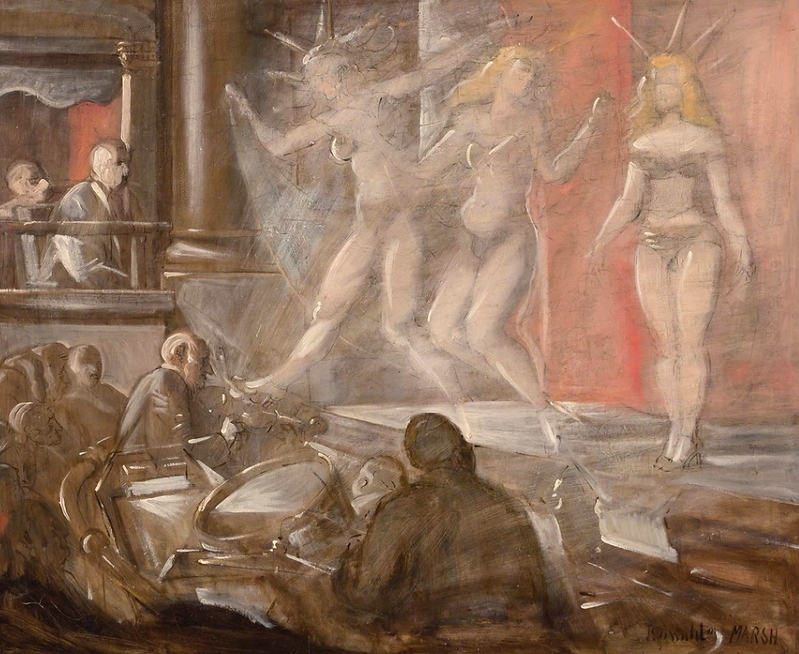
Reginald Marsh
Burlesque Show

Reginald Marsh
Stripper with Hat, 1951

Reginald Marsh
Eldorado: The Sorrow and Futility of Man Before the Beauty of Woman, 1946
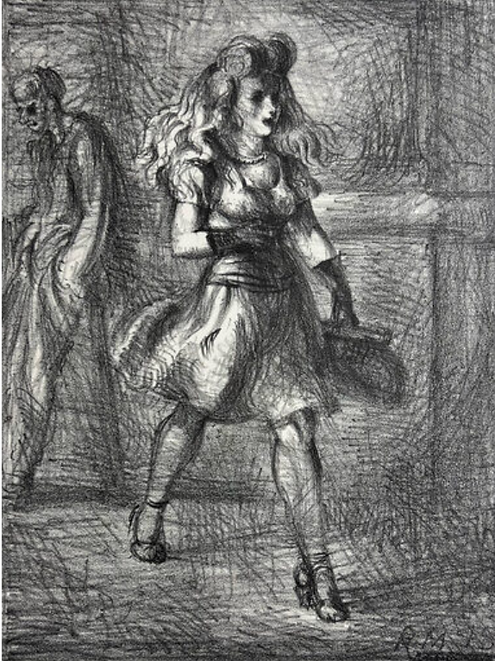
Reginald Marsh
Girl Walking, 1945
Raphael Soyer
1899 – 1987
Raphael Zalman Soyer
(December 25, 1899 – November 4, 1987) was a Russian-born American painter, draftsman, and printmaker. Soyer was referred to as an American scene painter. He is identified as a Social Realist because of his interest in men and women viewed in contemporary settings which included the streets, subways, salons and artists' studios of New York City. He also wrote several books on his life and art.
His brothers Moses Soyer and Isaac Soyer were also painters.
He was born as Raphael Schoar. He and his identical twin brother, Moses, were born in Borisoglebsk, Tambov, a southern province of Russia, on December 25, 1899. Their father, Abraham Shauer, a Hebrew scholar, writer and teacher, raised his six children in an intellectual environment in which much emphasis was placed on academic and artistic pursuits. Their mother, Bella, was an embroiderer. Their cousin was painter and meteorologist, Joshua Zalman Holland. Due to the many difficulties for the Jewish population in the late Russian Empire, the Soyer family was forced to emigrate in 1912 to the United States, where they ultimately settled in the Bronx. The family name changed from Schoar to Soyer during immigration.
Raphael pursued his art education at the free schools of the Cooper Union between 1914 and 1917, studying alongside his twin Moses. It was at Cooper Union where he met Chaim Gross, who became a lifelong friend from that time.
He continued his studies at the National Academy of Design from 1918 until 1922 and, subsequently, at the Art Students League of New York intermittently between 1920 until 1926. While at ASL, he studied with Guy Pene du Bois and Boardman Robinson, taking up the gritty urban subjects of the Ashcan school.

Raphael Soyer
Self Portrait

Raphael Soyer

Raphael Soyer

Raphael Soyer

Raphael Soyer

Raphael Soyer

Raphael Soyer
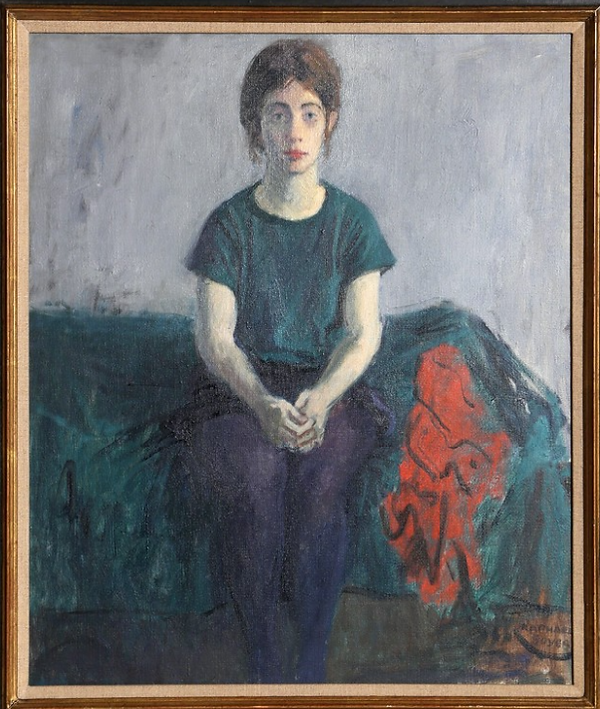
Raphael Soyer

Raphael Soyer

Raphael Soyer
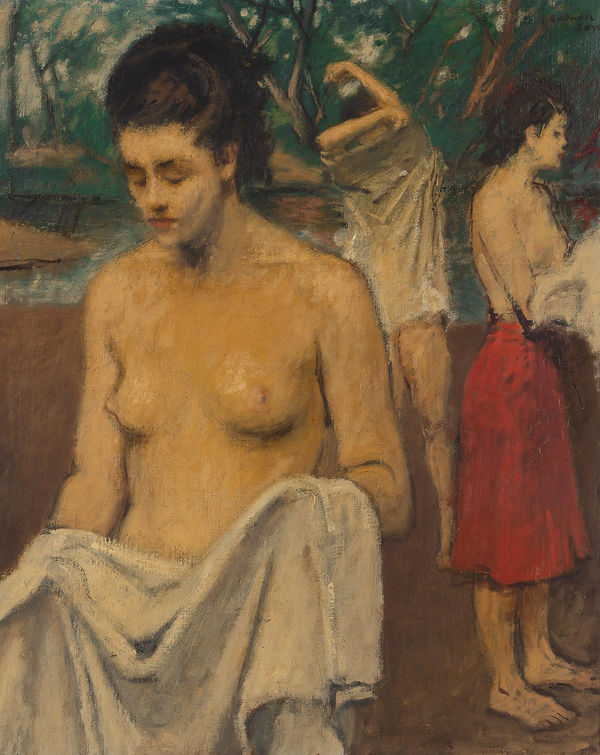
Raphael Soyer

Raphael Soyer

Raphael Soyer

Raphael Soyer

Raphael Soyer

Raphael Soyer

Raphael Soyer

Raphael Soyer

Raphael Soyer

Raphael Soyer

Raphael Soyer

Raphael Soyer

Raphael Soyer

Raphael Soyer

Raphael Soyer
Isabel Bishop
1902 – 1988
Isabel Bishop
(March 3, 1902 – February 19, 1988) was an American painter and graphic artist. Bishop studied under Kenneth Hayes Miller at the Art Students League of New York, where she would later become an instructor. She was most notable for her scenes of everyday life in Manhattan, as a member of the loosely-defined ‘Fourteenth Street School’ of artists, grouped in that precinct. Union Square features prominently in her work, which mainly depicts female figures. Bishop’s paintings won the American Academy of Arts and Letters Award, among other distinctions.
Bishop was born the youngest of five siblings in Cincinnati, Ohio. Founders of a prep school in Princeton, New Jersey, her parents were highly educated individuals and descendants from East coast mercantile families. Though the family descended from old wealth, their immediate status was of the middle class, and financial insecurity forced the family to move often. Bishop spent her childhood years in Detroit, Michigan. In every new city the Bishop family would move to, John, Isabel's father, would become involved with a local school. Oftentimes becoming the principal or eventually owning the school. Bishop compared growing up and moving around with her parents to be like being an only child, because her siblings were fifteen plus years older than her and didn't live with her family at the time.
Her father was a scholar of Greek and Latin. Her siblings, two sets of twins, were older than her by well over a decade. One set of twins, a boy and a girl, were twelve years older; the other set of twins, also a boy and girl, were fifteen years old at the time of her birth. Her mother was emotionally indifferent and distant from Bishop; she was a suffragist, feminist and aspiring writer who urged her daughters to become independent, strong women. After the family relocated to Detroit, Bishop began her art education at the age of 12 in a Saturday morning life drawing class at the John Wicker Art School in Detroit.
In 1918, at the age of 15, Bishop graduated high school and began art studies at John Wicker's art school in Detroit, Michigan. She later moved to New York City to study illustration at the New York School of Applied Design for Women. After two years there she shifted from illustration to painting, and attended the Art Students League for four years until 1924. It was there that she studied with Guy Pène du Bois and with Kenneth Hayes Miller, from whom she adapted a technique which owed much to baroque Flemish painting. In addition, she learned from other early modernists including Max Weber and Robert Henri. During the early 1920s she also studied and painted in Woodstock, New York. In 1963, she went to Yale University School of Fine Arts, New Haven.
Bishop was described as an eager intellectual who was naturally inquisitive and independent in her ways. In this period, women were becoming very active in the arts community, yet were still taken for granted. Bishop pushed against this attitude toward women artists with her insistence on applying herself both academically and politically in the art realm. Throughout her educational ventures, she was fully funded by her father's cousin, James Bishop Ford, who aided her family in their time of need. Writing on this financial sponsorship, Isabel Bishop states that she viewed her gender as an advantage: "I was lucky. I think if I had been a man the relative who sponsored my whole studenthood might not have done so. Men are supposed to make their own way. Young women were supposed to marry. But a young woman putting so much time and effort—being so serious—that was different—that interested him. I don't think he would have subsidized me if I had been a boy."
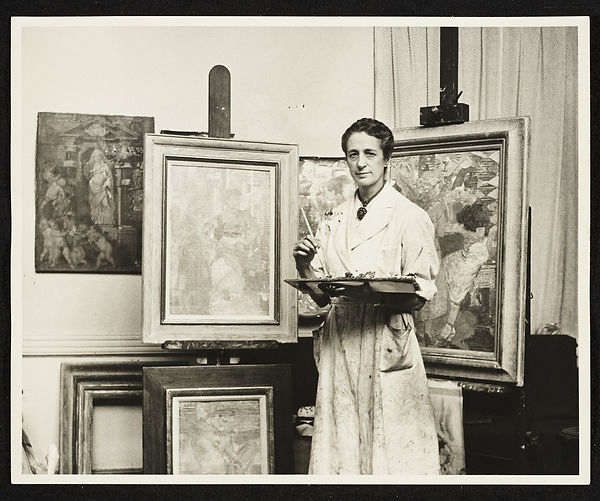
Isabel Bishop
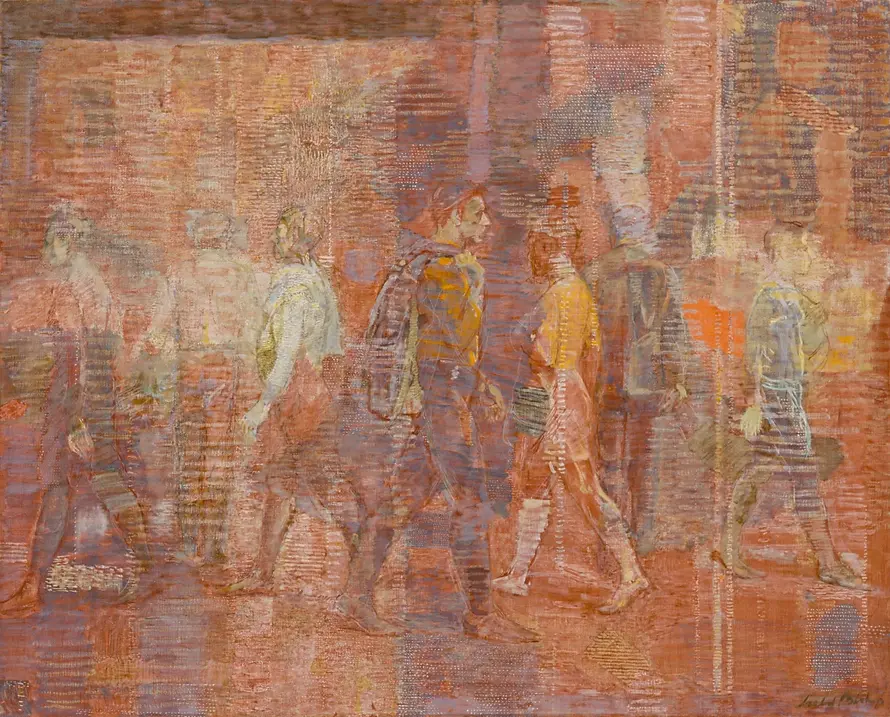
Isabel Bishop
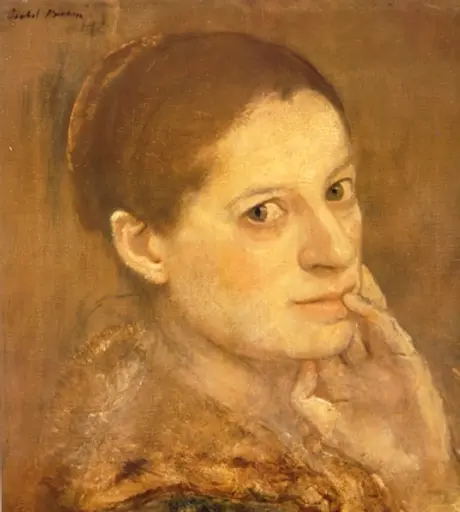
Isabel Bishop

Isabel Bishop

Isabel Bishop

Isabel Bishop

Isabel Bishop

Isabel Bishop

Isabel Bishop
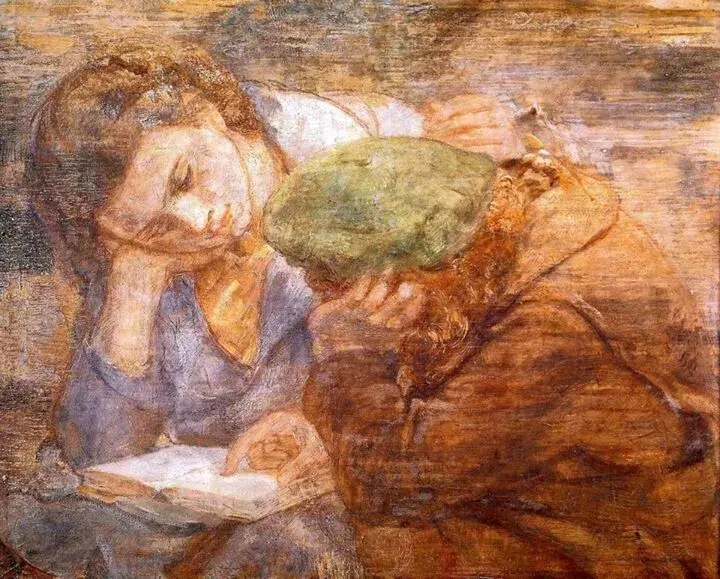
Isabel Bishop
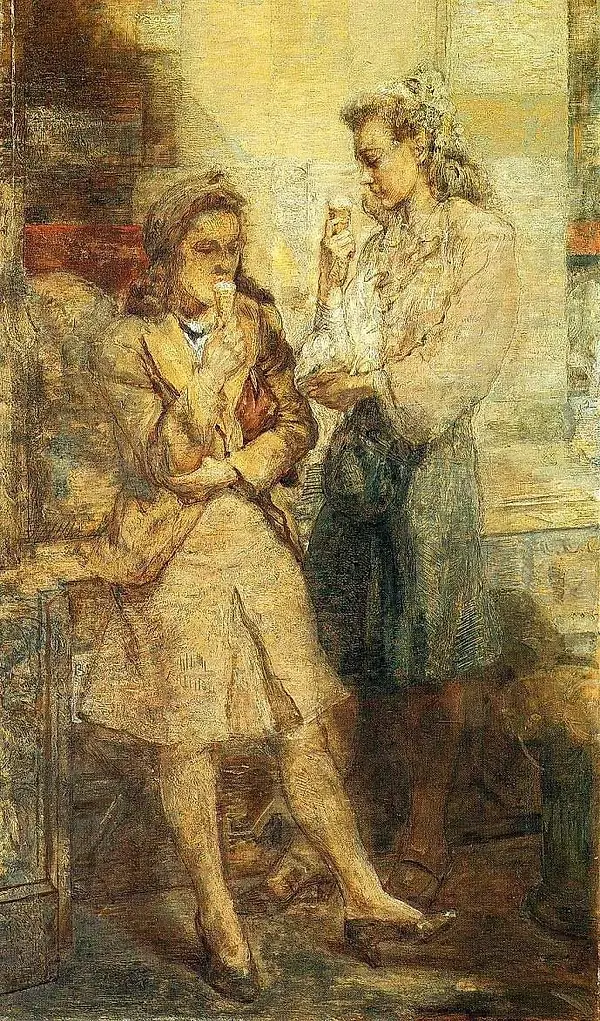
Isabel Bishop

Isabel Bishop

Isabel Bishop
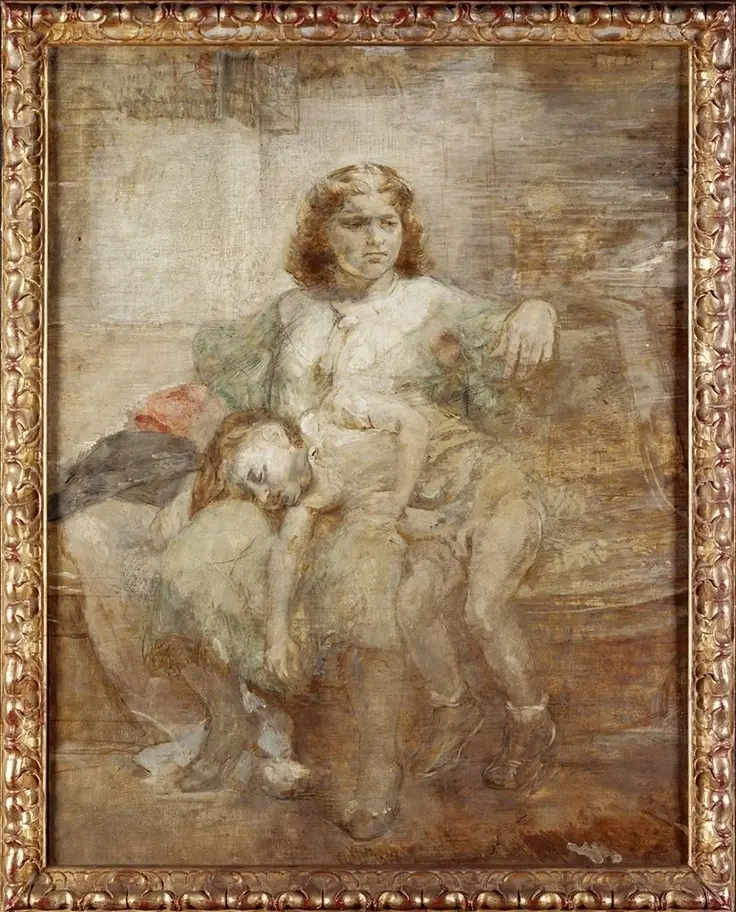
Isabel Bishop

Isabel Bishop

Isabel Bishop

Isabel Bishop

Isabel Bishop

Isabel Bishop
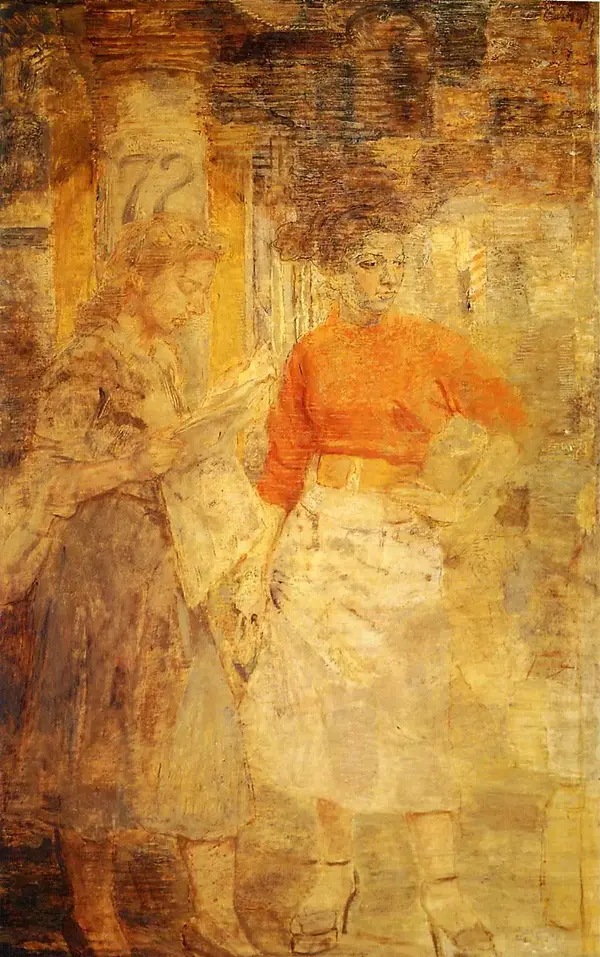
Isabel Bishop

Isabel Bishop
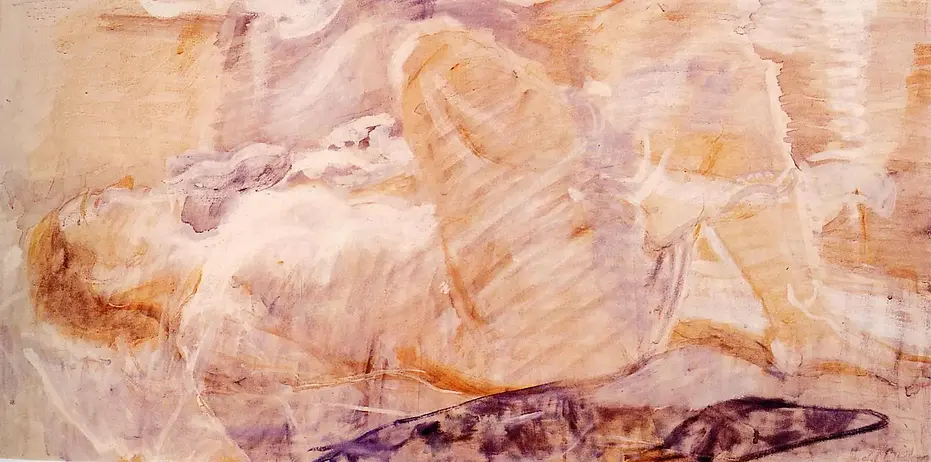
Isabel Bishop

Isabel Bishop

Isabel Bishop

Isabel Bishop

Isabel Bishop

Isabel Bishop

Isabel Bishop

Isabel Bishop

Isabel Bishop

Isabel Bishop
Isaac Soyer
1902 – 1981
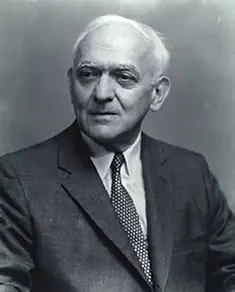
Isaac Soyer
(April 26, 1902 – July 8, 1981) was a Russian-born American social realist painter and educator. His art work often portrayed working-class people of New York City in his paintings.
He was born as Isaac Schoar on April 26, 1902, in Russia. He was the fourth of six children; his older twin brothers Moses Soyer and Raphael Soyer were also painters. Their father, Abraham Shauer, a Hebrew scholar, writer and teacher, raised his six children in an intellectual environment in which much emphasis was placed on academic and artistic pursuits. Their mother, Bella, was an embroiderer. Their cousin was painter and meteorologist Joshua Zalman Holland. Due to the many difficulties for the Jewish population in the late Russian Empire, the Soyer family was forced to emigrate in 1912 to the United States, where they ultimately settled in the Bronx. The family name changed from Schoar to Soyer during immigration.
Isaac Soyer studied at the National Academy of Design, Cooper Union, Educational Alliance and studied in Paris and Madrid.
Soyer painted portraits of friends and relatives and vignettes of working-class life. He taught classes at the Works Progress Administration's Federal Art Project.
Soyer's work Employment Agency (1937) reveals the social realities of the years of the Great Depression. It features the image of a Black woman and three white men waiting for a job interview response.
During World War II, Soyer worked at Bell Aircraft Corporation in Buffalo, New York.
Soyer died of a heart attack at Lenox Hill Hospital on July 8, 1981, at age 79; he was residing in Manhattan at the time.
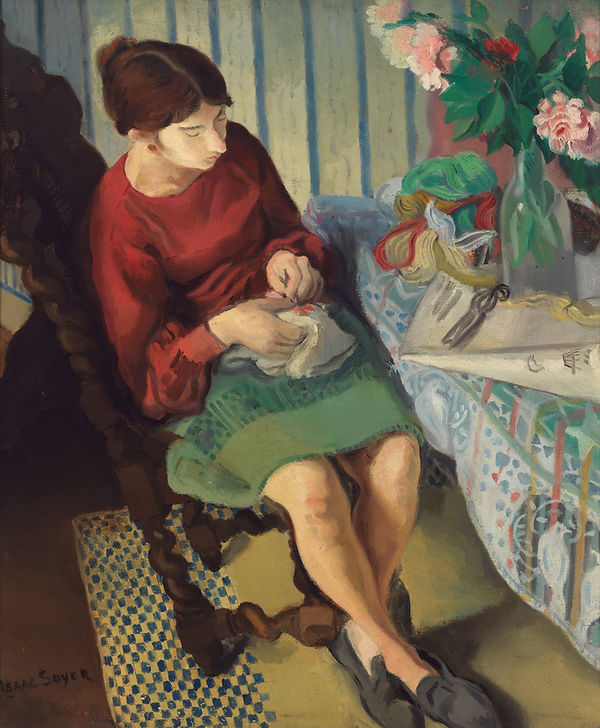
Isaac Soyer
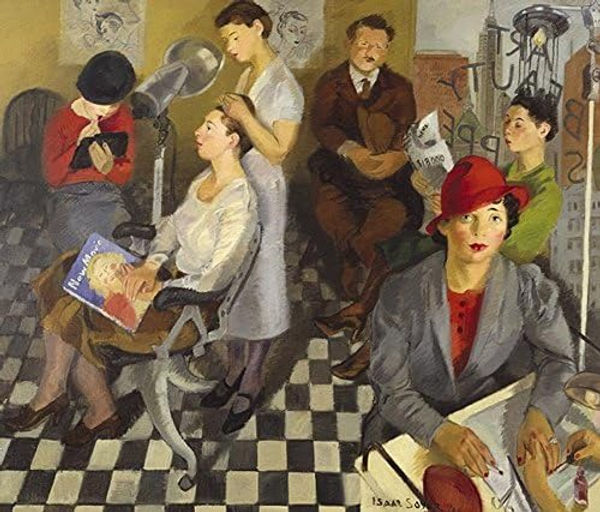
Isaac Soyer

Isaac Soyer

Isaac Soyer

Isaac Soyer

Isaac Soyer

Isaac Soyer

Isaac Soyer
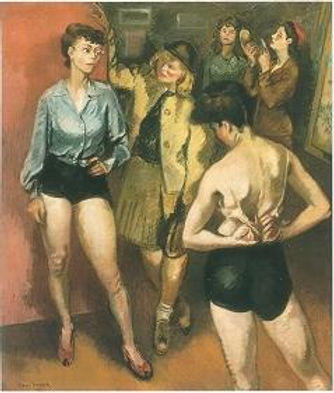
Isaac Soyer

Isaac Soyer

Isaac Soyer
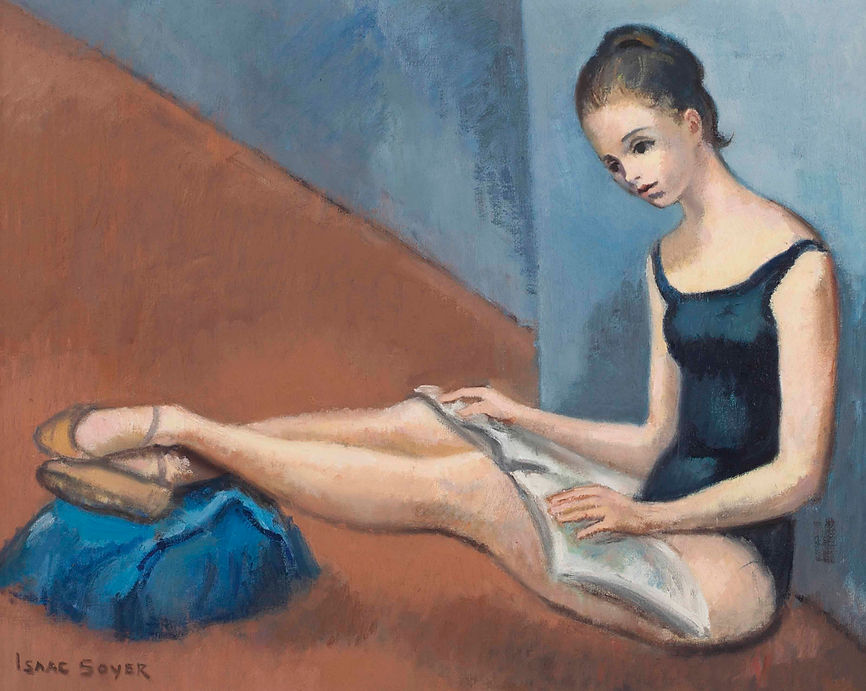
Isaac Soyer
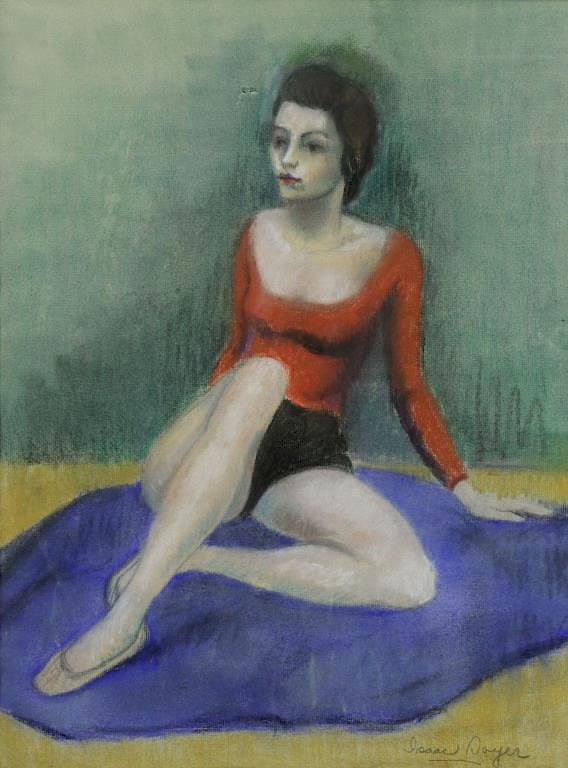
Isaac Soyer
Marianne Appel
1913 – 1988

Marianne Appel
(May 6, 1913 – September 26, 1988) was an American artist and a member of the Woodstock artists colony. She was also known under the professional name of Marianne Harms as a puppet designer. She painted murals for the Works Progress Administration (WPA) Fine Arts Section during the Great Depression and was selected for exhibits at the Whitney Museum of American Art, the Art Institute of Chicago, the Corcoran Gallery of Art and has works in the permanent collections of the Metropolitan Museum of Art and the Smithsonian American Art Museum. She was married to Austin Mecklem from 1936 to his death in 1951, but kept her maiden name professionally until after her second marriage to Carl Harms in 1960, after which she went by Marianne Harms. Harms became an illustrator and puppet designer, learning her craft working with Bil Baird and then working as a designer and fabricator for Jim Henson on the pilot for The Muppets and numerous of his television specials and movies.

Marianne Appel

Marianne Appel
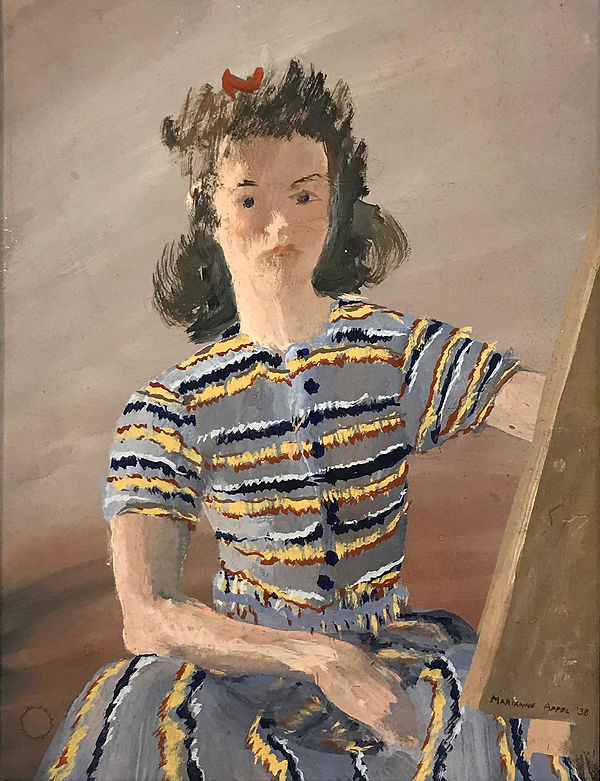
Marianne Appel
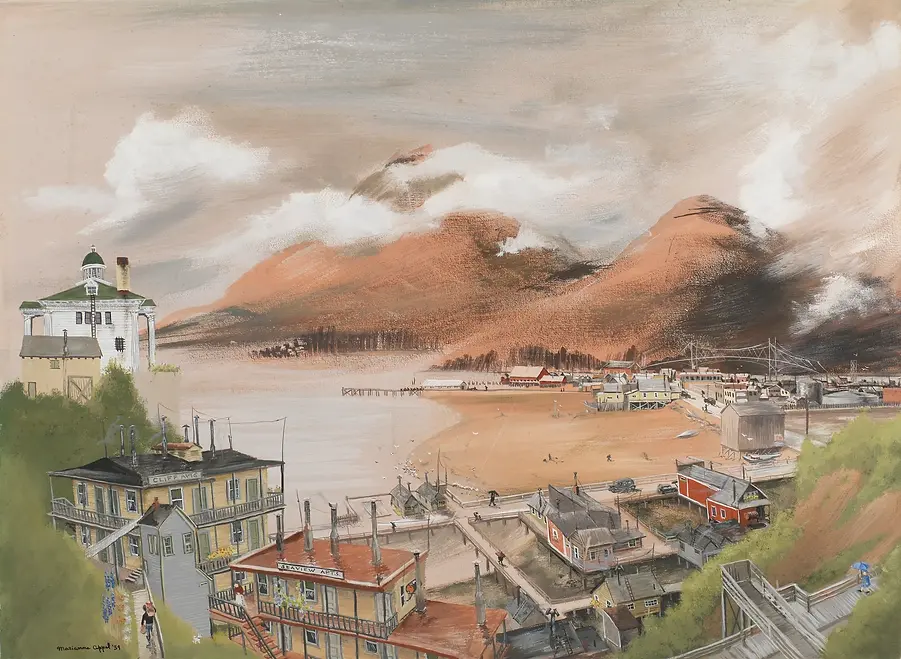
Marianne Appel

Marianne Appel

Marianne Appel

Marianne Appel

Marianne Appel

Marianne Appel

Marianne Appel
Andrew Newell Wyeth
1917 – 2009
Andrew Newell Wyeth
(July 12, 1917 – January 16, 2009) was an American visual artist, primarily a realist painter, working predominantly in a regionalist style. He believed he was also an abstractionist, portraying subjects in a new, meaningful way. The son of N. C. Wyeth and father of Jamie Wyeth, he was one of the best-known U.S. artists of the middle 20th century. James H. Duff explores the art and lives of the three men in An American Vision: Three Generations of Wyeth Art. Raised with an appreciation of nature, Wyeth took walks that fired his imagination. Henry David Thoreau, Robert Frost, and King Vidor's The Big Parade (1925) inspired him intellectually and artistically. Wyeth featured in a documentary The Metaphor in which he discussed Vidor's influence on the creation of his works of art, like Winter 1946 and Portrait of Ralph Kline. Wyeth was also inspired by Winslow Homer and Renaissance artists.
His father, N. C., gave him art lessons as a child, during which he developed the skills to create landscapes, illustrations, works of figures, and watercolor paintings. He also instilled a sense of passion and purpose in creating art that "enriches and broadens one's perspective." His brother-in-law, Peter Hurd, taught him to use egg tempera. Betsy managed his career and was also a strong influence in his work.
One of the best-known images in 20th-century American art is his tempera painting Christina's World, currently in the collection of the Museum of Modern Art in New York City, which was painted in 1948, when Wyeth was 31 years old. Wyeth is also known for The Helga Pictures.
In his art, Wyeth's favorite subjects were the land and people around him, both in his hometown of Chadds Ford, Pennsylvania and at his summer home in Cushing, Maine. Also appearing in his works are his friend's Kuerner Farm and an 18th-century mill, Brinton's Mill, that Wyeth and his wife purchased. He made a collection of about 300 paintings of windows which were presented in the National Gallery of Art's 2014 exhibition, "Andrew Wyeth: Looking Out, Looking In". In the 1960s, he began to paint portraits of family members, friends, and neighbors. Wyeth often said: "I paint my life."
Summarizing the variation of opinions about his work, art historian Robert Rosenblum said that Wyeth was the "most overrated and underrated" artist. He was known for his skill at creating watercolor and tempera paintings that engage one's senses and emotions. Christina's World became an iconic image, a status unmet by even the best paintings, "that registers as an emotional and cultural reference point in the minds of millions." Among the awards and honors that he received since 1947 are the Presidential Medal of Freedom and Congressional Gold Medals and he was elected to Britain's Royal Academy.

Andrew Newell Wyeth

Andrew Newell Wyeth

Andrew Newell Wyeth

Andrew Newell Wyeth

Andrew Newell Wyeth

Andrew Newell Wyeth

Andrew Newell Wyeth

Andrew Newell Wyeth
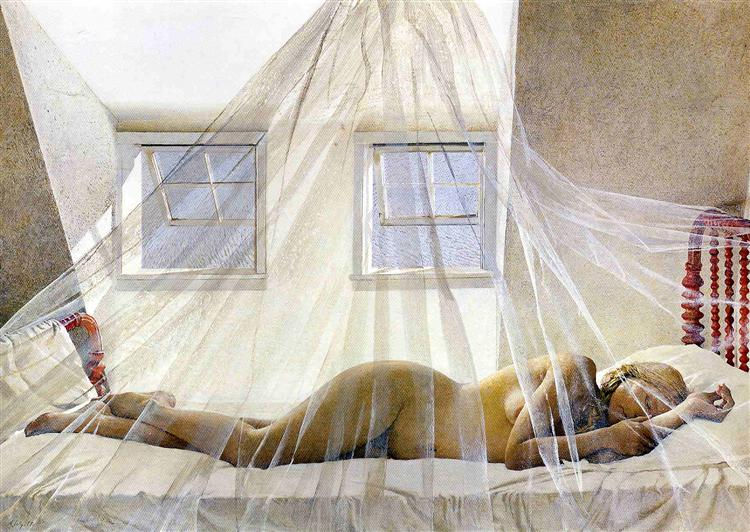
Andrew Newell Wyeth

Andrew Newell Wyeth

Andrew Newell Wyeth

Andrew Newell Wyeth
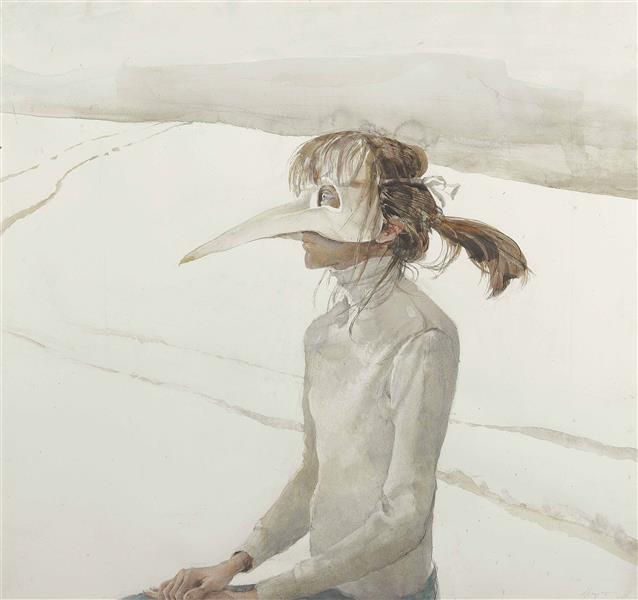
Andrew Newell Wyeth

Andrew Newell Wyeth
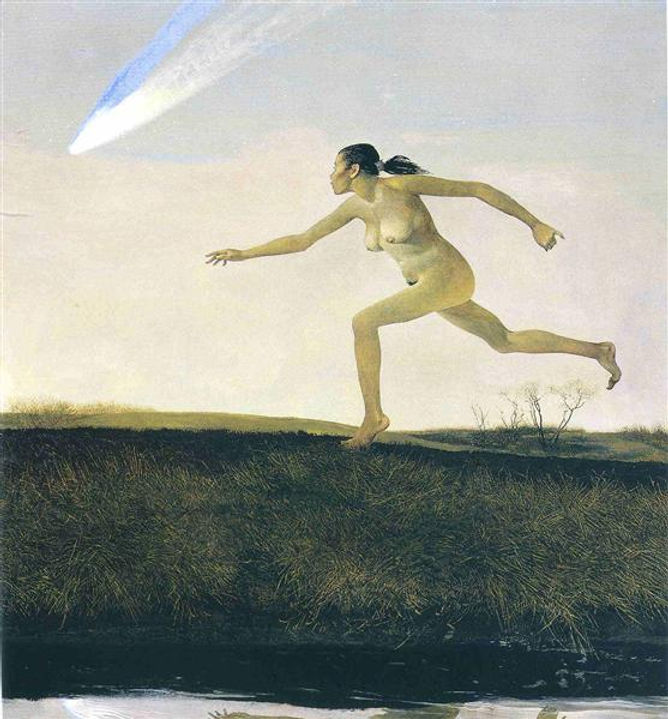
Andrew Newell Wyeth

Andrew Newell Wyeth

Andrew Newell Wyeth
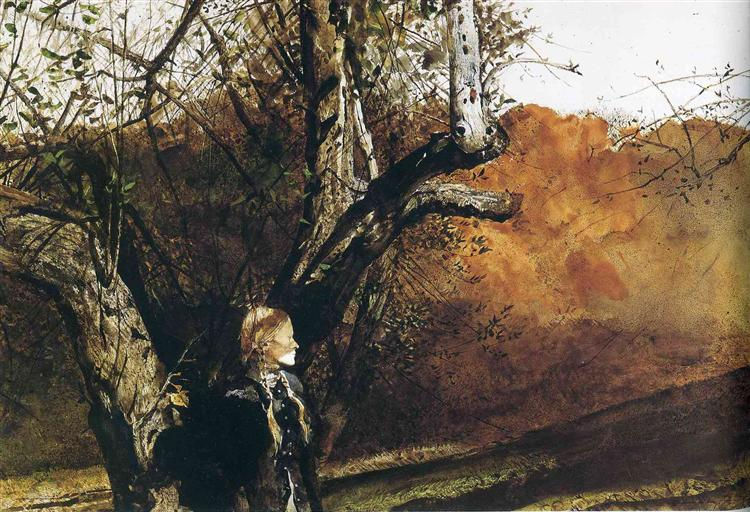
Andrew Newell Wyeth

Andrew Newell Wyeth

Andrew Newell Wyeth

Andrew Newell Wyeth
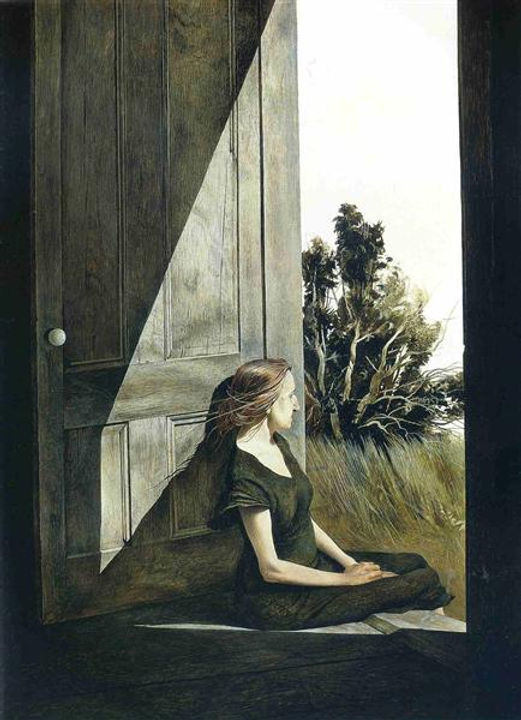
Andrew Newell Wyeth

Andrew Newell Wyeth

Andrew Newell Wyeth

Andrew Newell Wyeth

Andrew Newell Wyeth

Andrew Newell Wyeth
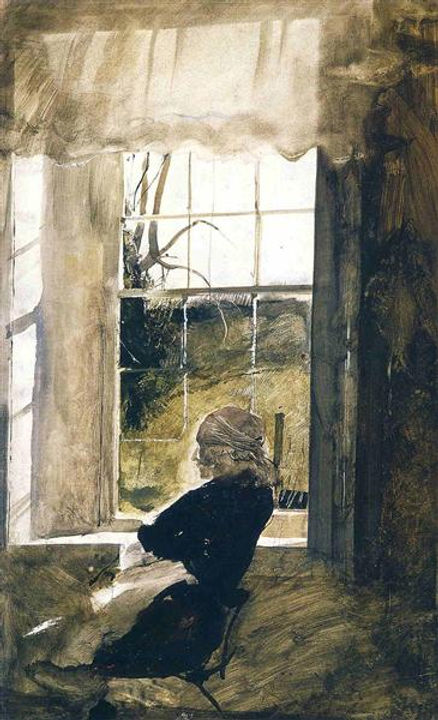
Andrew Newell Wyeth
Richard Diebenkorn
1922 – 1993

Richard Diebenkorn
(April 22, 1922 – March 30, 1993) was an American painter and printmaker. His early work is associated with abstract expressionism and the Bay Area Figurative Movement of the 1950s and 1960s. In the late 1960s he began his extensive series of geometric, lyrical abstract paintings. Known as the Ocean Park paintings, these paintings were instrumental to his achievement of worldwide acclaim.
Richard Clifford Diebenkorn Jr. was born on April 22, 1922, in Portland, Oregon. His family moved to San Francisco, California, when he was two years old. From the age of four or five he was continually drawing. In 1940, Diebenkorn entered Stanford University, where he met his first two artistic mentors, professor and muralist Victor Arnautoff, who guided Diebenkorn in classical formal discipline with oil paint, and Daniel Mendelowitz, with whom he shared a passion for the work of Edward Hopper. Hopper's influence can be seen in Diebenkorn's representational work of this time. While attending Stanford, Diebenkorn visited the home of Sarah Stein, the sister-in-law of Gertrude Stein, and first saw the works of European modernist masters Cézanne, Picasso, and Matisse.
Also at Stanford, Diebenkorn met his fellow student and future wife, Phyllis Antoinette Gilman. They married in 1943 and went on to have two children together, a daughter, Gretchen (1945), and a son, Christopher (1947). The beginning of the United States's involvement in World War II interrupted Deibenkorn's education at Stanford, and he was not able complete his degree at that time. Diebenkorn entered the United States Marine Corps in 1943, where he served until 1945.
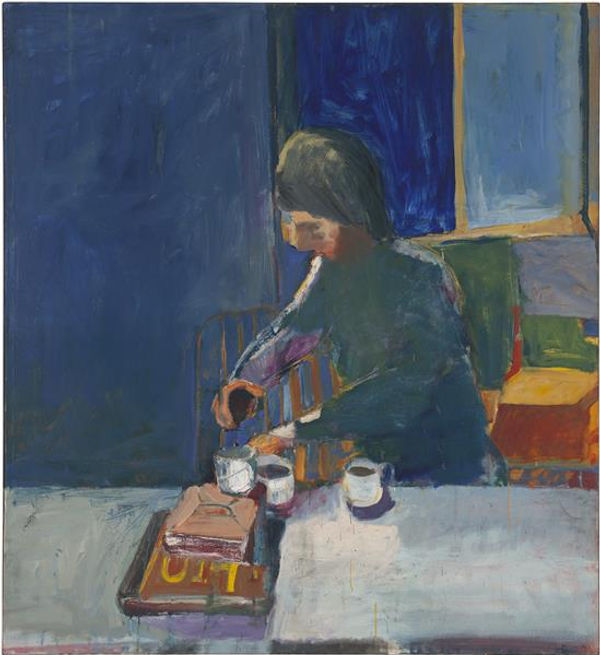
Richard Diebenkorn
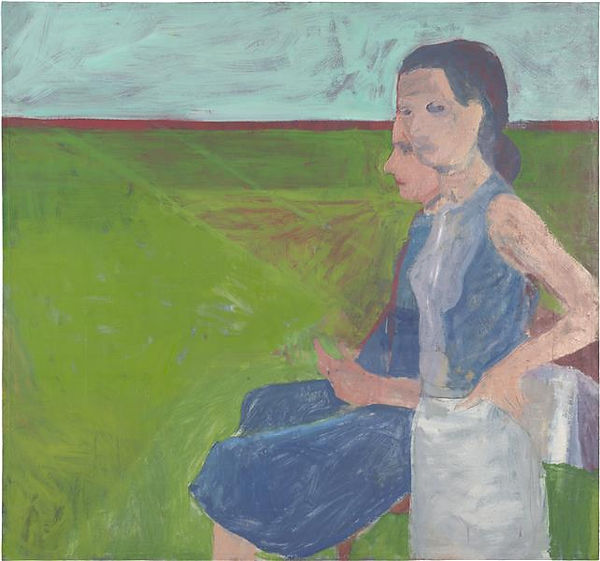
Richard Diebenkorn

Richard Diebenkorn

Richard Diebenkorn

Richard Diebenkorn

Richard Diebenkorn

Richard Diebenkorn

Richard Diebenkorn

Richard Diebenkorn

Richard Diebenkorn
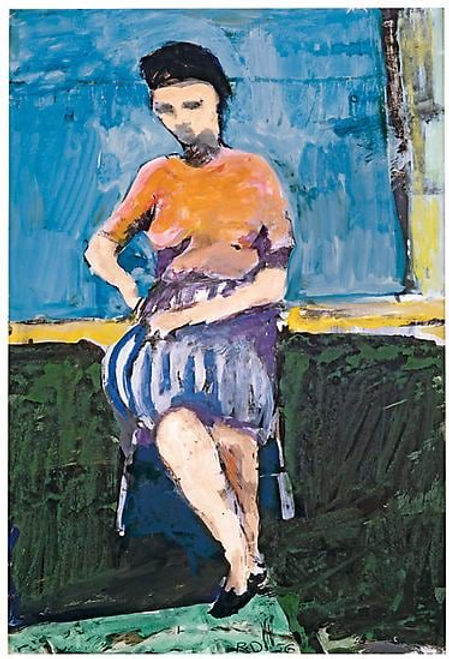
Richard Diebenkorn
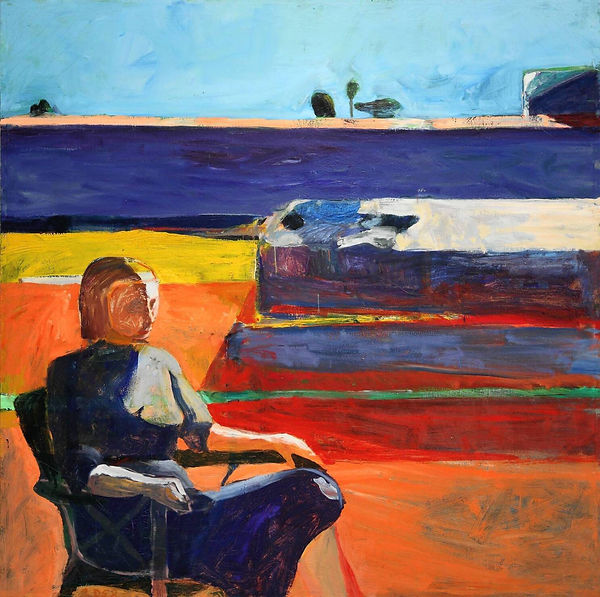
Richard Diebenkorn

Richard Diebenkorn
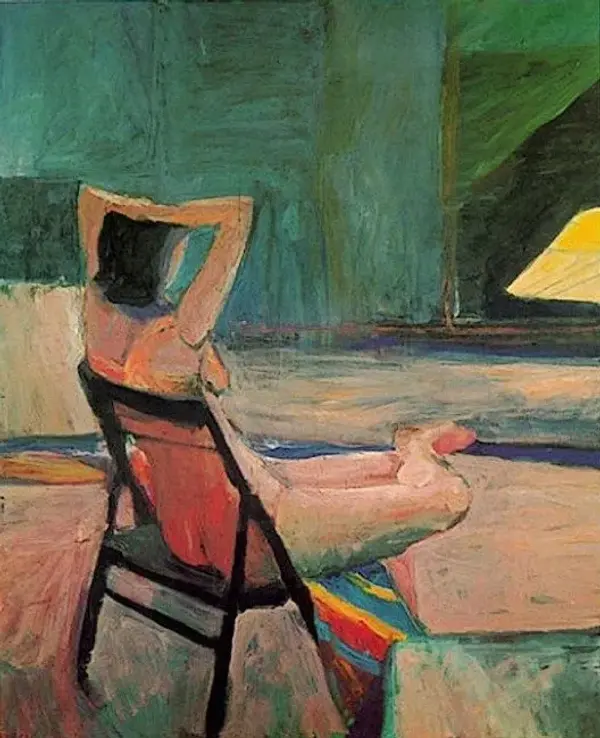
Richard Diebenkorn

Richard Diebenkorn

Richard Diebenkorn
David Hockney
b.1937
David Hockney
(born 9 July 1937) is an English painter, draftsman, printmaker, stage designer, and photographer. As an important contributor to the pop art movement of the 1960s, he is considered one of the most influential British artists of the 20th century.
Hockney has owned residences and studios in Bridlington, and London, as well as two residences in California, where he has lived intermittently since 1964: one in the Hollywood Hills, one in Malibu, and an office and archives on Santa Monica Boulevard in West Hollywood, California.
On 15 November 2018, Hockney's 1972 work Portrait of an Artist (Pool with Two Figures) sold at Christie's auction house in New York City for $90 million (£70 million), becoming the most expensive artwork by a living artist sold at auction. This broke the previous record, set by the 2013 sale of Jeff Koons's Balloon Dog (Orange) for $58.4 million. Hockney held this record until 15 May 2019 when Koons reclaimed the honour selling his Rabbit for more than $91 million at Christie's in New York.

DAVID HOCKNEY

DAVID HOCKNEY: THE CHA-CHA AS DANCED IN THE EARLY HOURS OF MARCH 24.1961. Private Collection
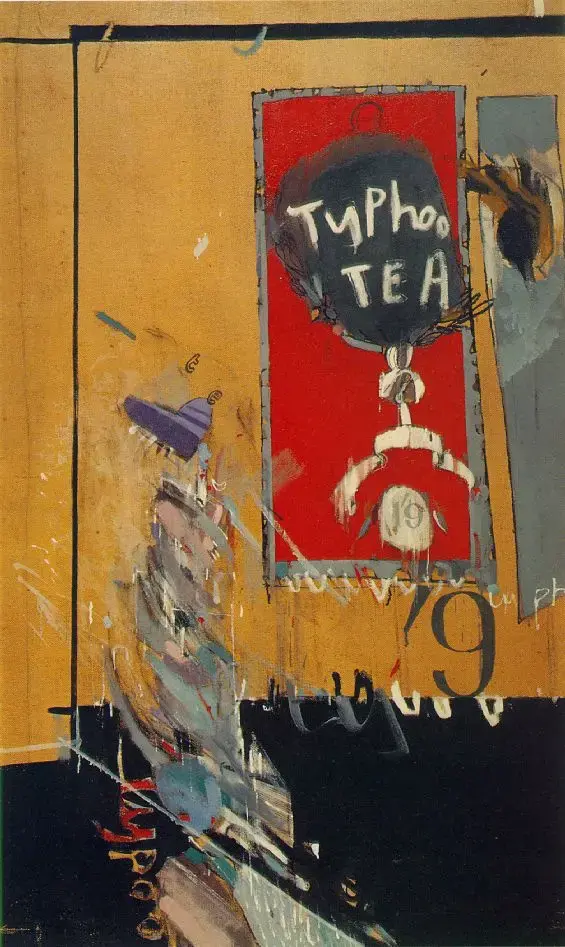
Tea box
David Hockney
1961
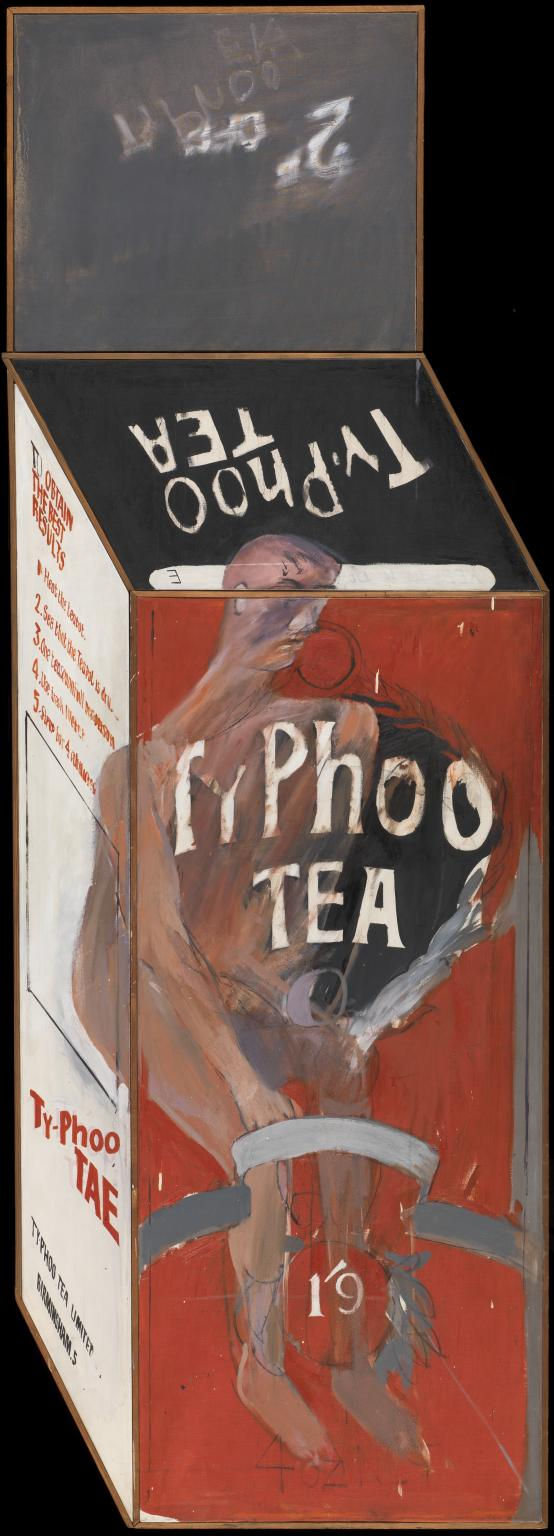
David Hockney
Tea Painting in an Illusionistic Style
1961

David Hockney
Study for Doll Boy
1960

David Hockney
My Bonnie Lies Over the Ocean
1961–2

David Hockney
1. The Arrival
1961–3

David Hockney
2. Meeting the Good People (Washington)
1961–3

David Hockney
7a. Cast Aside
1961–3

David Hockney
Egyptian Dignitaries

DAVID HOCKNEY,
THE SPLASH

DAVID HOCKNEY,
A BIGGER SPLASH, 1967

David Hockney,
Portrait of an Artist (Pool with Two Figures), 1972

Fred and Marcia Weisman)Date:
1968
David Hockney

David Hockney,
Shirley Goldfarb and Gregory Masurovsky, 1974

David Hockney,
Mr and Mrs Clark and Percy, 1970-71

David Hockney,
Beverly Hills Housewife, 1966-67
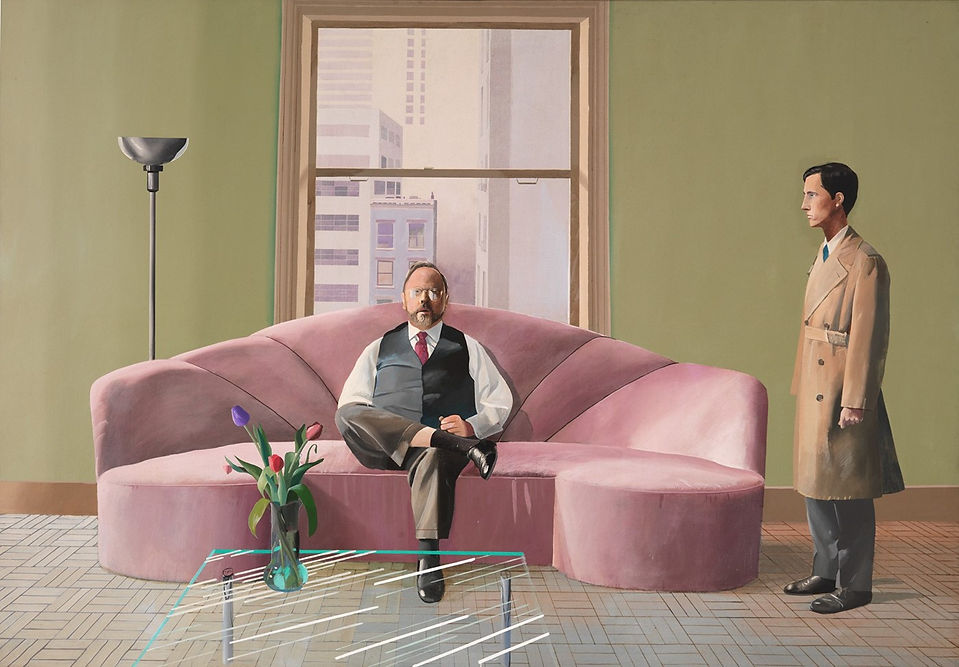
David Hockney,
Henry Geldzahler and Christopher Scott, 1969

David Hockney
Self Portrait
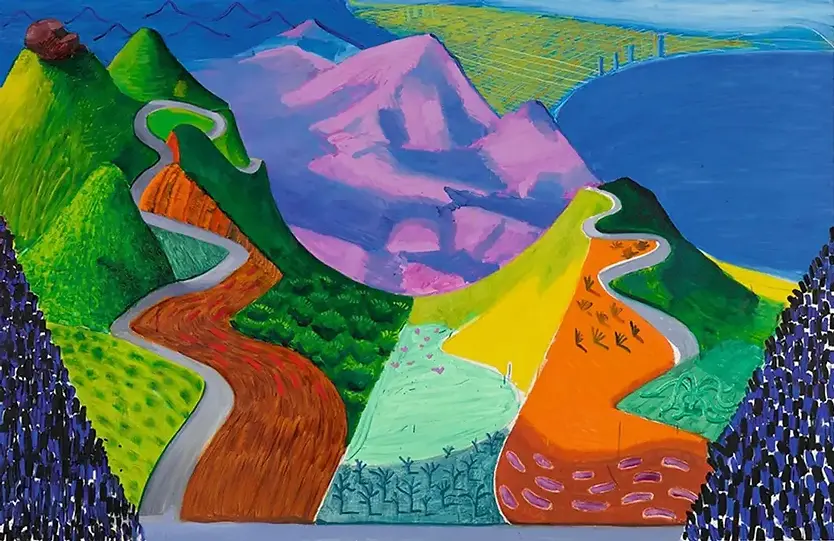
David Hockney,
Pacific Coast Highway And Santa Monica

David Hockney,
Sur La Terrasse
1971
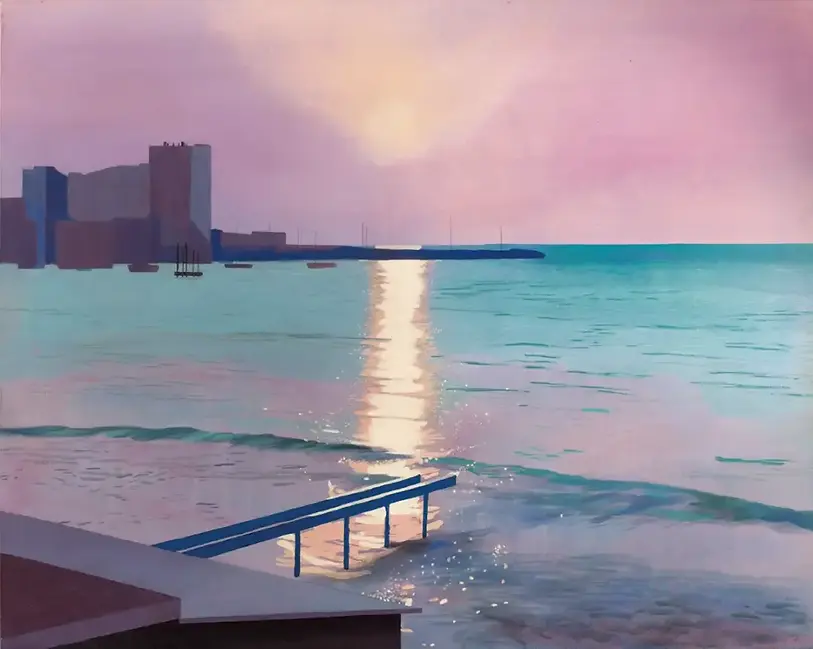
David Hockney,
Early Morning, Sainte-Maxime
1969
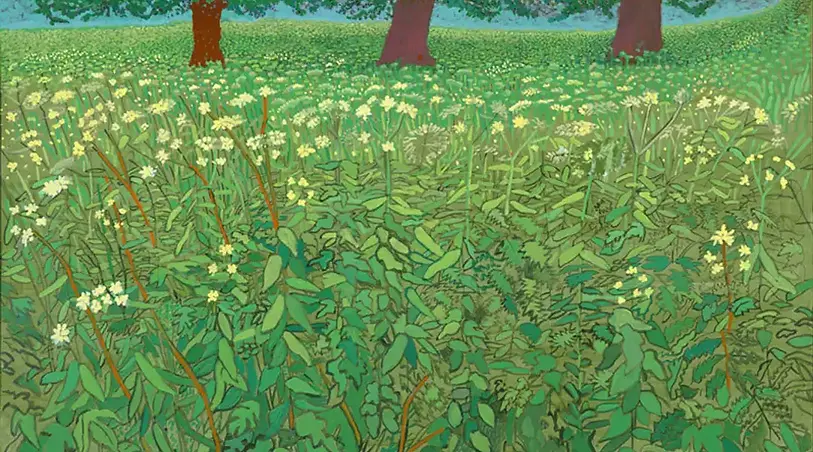
David Hockney,
Queen Anne's Lace Near Kilham
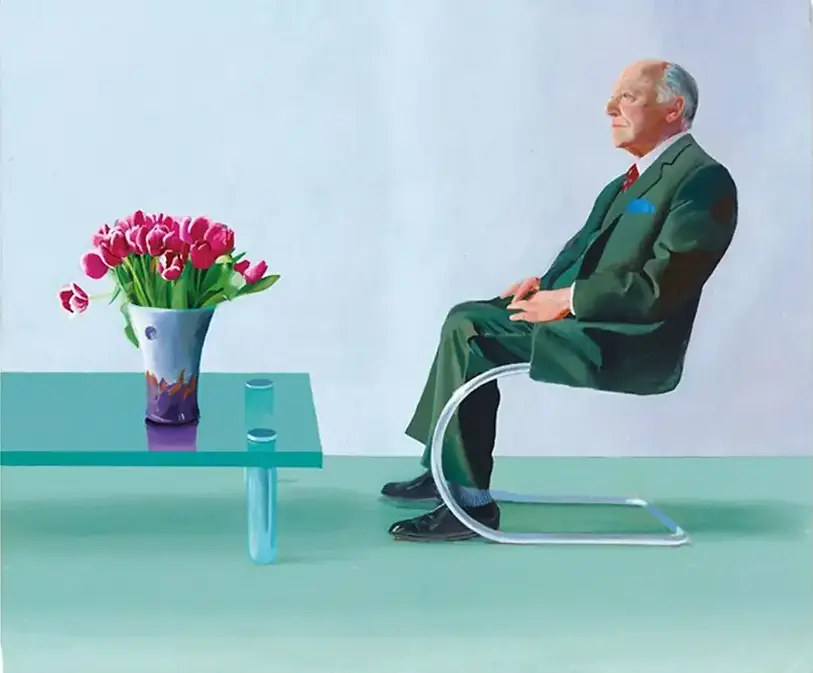
David Hockney,
Portrait Of Sir David Webster
1971

David Hockney,
30 Sunflowers
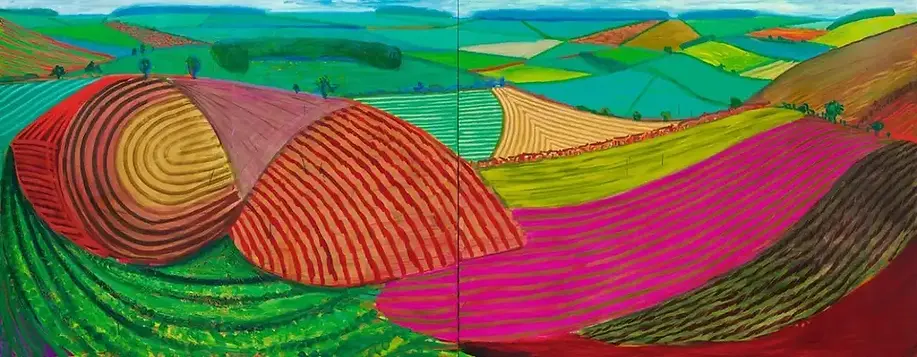
David Hockney,
Double East Yorkshire

David Hockney,
Montcalm Interior With 2 Dogs
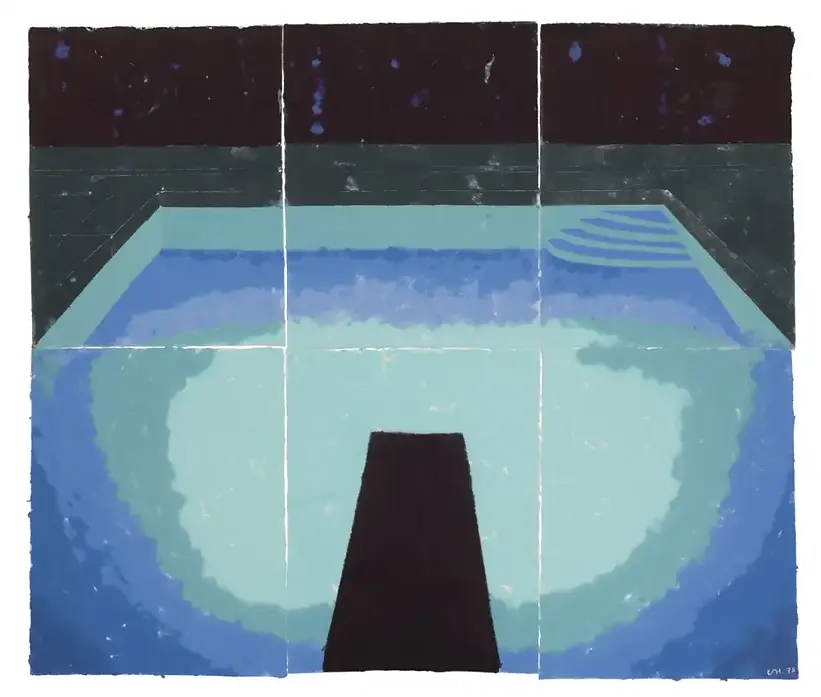
David Hockney,
Piscine De Medianoche (Paper Pool 30)
1978

David Hockney,
Winter Timber

David Hockney,
The Arrival Of Spring In Woldgate East Yorkshire

David Hockney
Celia With Green Hat,
1984

David Hockney
Two Pembroke Studio Chairs from the Moving Focus series,
1984

David Hockney
Tristan und Isolde
(hand signed and inscribed by David Hockney as well as 40 world class musicians including Zubin Mehta, Jeannine Altmeyer, and William Johns),
1987